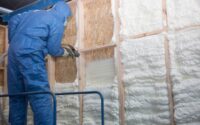Imagine cuddling up with your cat or dog only to be met with the pungent aroma of bad breath. You might wrinkle your nose and wonder, “Is this normal?” It’s not unusual for our four-legged friends to get a bit stinky from time to time, but when nasty breath becomes a persistent issue, it might be a red flag waving for your attention. In this article, we’ll explore the link between foul breath and dental health in pets and why what’s happening in their mouths matters more than you might think.
Sniffing Out the Causes of Bad Breath in Pets
When your pet greets you with a less-than-pleasant whiff from their mouth, it’s not just an assault on your senses—it can indicate underlying health issues. While occasional bad breath might be the result of a particularly smelly meal or a digging adventure in the garden, chronic bad breath is often a telltale sign of dental problems.
Persistent bad breath, or halitosis, in pets can stem from:
-
Plaque and tartar buildup
-
Gum disease (also called periodontal disease)
-
Tooth decay or abscesses
-
Oral infections or inflammations
These issues can cause significant discomfort for your pet and may lead to more severe health complications if left unaddressed. The good news is early detection and intervention can go a long way in preventing dental distress for your furry pal.
The Lowdown on Dental Diseases in Pets
Dental diseases are no walk-in-the-park for pets. It’s easy to overlook what’s going on in your pet’s mouth, but being in the know is critical for their overall well-being. Gum disease is particularly common and occurs when the buildup of plaque and tartar leads to inflammation and infection in the tissues surrounding the teeth. Some symptoms to look out for include:
-
Red, swollen, or bleeding gums
-
Difficulty eating or changes in chewing habits
-
Loose or missing teeth
-
Pawing at the mouth or face
Ignoring these signs is like turning a blind eye to their cries for help. Dental diseases don’t just cause oral pain; they can also lead to systemic health issues, including heart, liver, and kidney problems if the bacteria enter the bloodstream.
At-Home Dental Care: Your First Line of Defense
Taking care of your pet’s pearly whites at home is essential for keeping bad breath at bay. By integrating dental hygiene into your daily routine, you can play a critical role in preserving your pet’s oral health. Here are some tips to help you keep your pet’s mouth fresh and clean:
-
Brush their teeth regularly with pet-safe toothpaste.
-
Provide dental chews and toys that promote chewing and saliva production.
-
Consider dental diets specifically formulated to reduce plaque and tartar.
-
Keep an eye on your pet’s breath and mouth, watching for any changes.
It’s important not to overlook these simple steps, as they can really make a difference in preventing dental issues from developing or worsening.
Professional Cleanings: Partnering with Your Vet
While you can do quite a bit at home, there’s a component of dental care that requires professional attention. Regular checkups at veterinary clinics like Shatto Veterinary Center can spot potential problems early on and provide the necessary treatments to keep your pet’s mouth in tip-top shape. Vets have the expertise and equipment to perform thorough cleanings, remove tartar, and address any dental issues that might be beyond the scope of at-home care.
During a professional cleaning, your pet will typically undergo the following:
-
A comprehensive oral examination
-
Scaling to remove plaque and tartar from above and below the gum line
-
Polishing to smooth the tooth surface and discourage plaque attachment
-
Fluoride treatment or dental sealants (if needed)
These cleanings often require anesthesia, but don’t let that concern you too much. Veterinary professionals are well-versed in administering and monitoring anesthesia to ensure your pet’s safety and comfort during the procedure.
Common Dental Treatments for Pets
When dental problems are detected, various treatments can address these issues and help restore your pet’s oral health. Common dental treatments for pets include:
-
Extractions of damaged or decayed teeth
-
Treatment of oral infections with antibiotics
-
Application of fluoride or other treatments to strengthen teeth
-
Adjustment of diets to support dental health
Remember, even after treatment, ongoing dental care is crucial to prevent recurring problems. Work closely with your vet to establish a maintenance plan that suits your pet’s specific needs.
Preventive Measures Beyond Dental Care
Caring for your pet’s oral health doesn’t stop at the teeth and gums. Overall wellness involves a holistic approach, and preventive care plays a significant part in this. Regular dog and cat vaccinations play a key role in protecting your pet from various diseases that can indirectly affect their dental health.
Implementing a vaccination schedule helps to protect your pet from:
-
Viruses and infections that can lead to oral lesions or inflammations
-
Systemic illnesses that might weaken their immune system and oral defenses
Vaccinations, combined with routine oral care, can significantly reduce the risk of dental problems developing due to secondary infections.
When to Visit a Veterinary Dentist
Just as we visit the dentist for regular checkups and treatments, there are times when your pet needs the specialized attention of a cat and dog dentist. A veterinary dentist has additional training and expertise in diagnosing and treating complex dental issues in pets. If you notice persistent bad breath, visible tartar buildup, or any changes in your pet’s mouth or eating habits, these are indicators it’s time to seek out a specialist.
A veterinary dentist can provide advanced care, such as:
-
Endodontic treatments (root canals)
-
Orthodontics to correct bite alignment
-
Restorative dentistry for damaged teeth
-
Advanced periodontal therapy
Visiting a specialized dentist might sound daunting, but it’s an investment in your pet’s health that can lead to better outcomes and happier days ahead.
Wrapping Up
As we conclude, remember that your pet’s foul breath could be a cry for dental care. Promptly tending to their oral hygiene can prevent discomfort and more critical issues. Maintain their dental health with consistent home care and vet visits to safeguard their overall well-being. A fresh breath not only means a happier pet but is also a sign of good health. So when your furry companion’s mouth odor hints at trouble, act fast—your pet’s smile depends on it.








